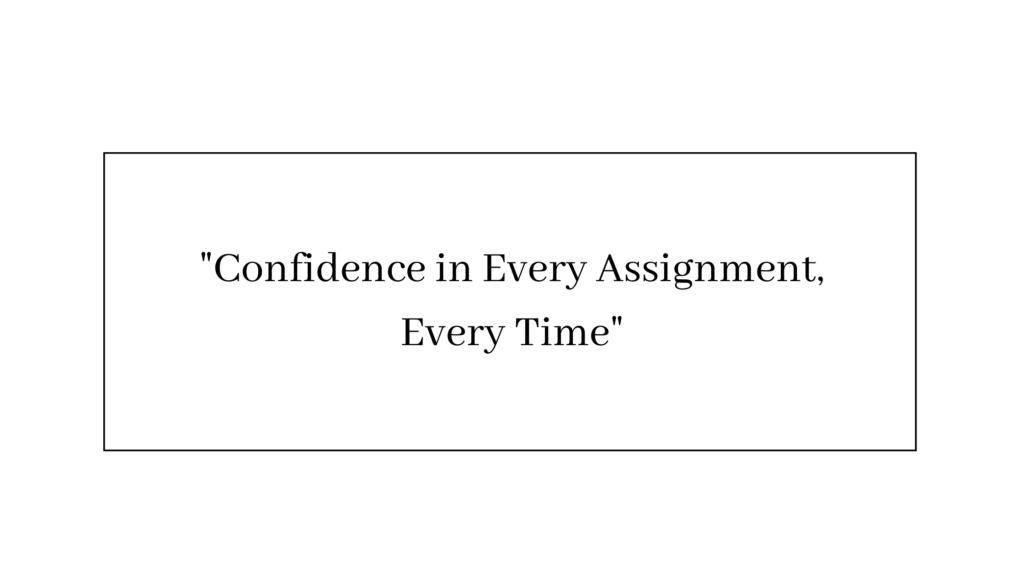
Writing assignments can be a challenging task, requiring careful thought, research, and organization. However, it’s equally important to pay attention to the final stage of the writing process: proofreading and editing. Effective proofreading and editing techniques can significantly enhance the quality and impact of your assignments. In this article, we will explore essential strategies, tips, and tricks to help you improve your proofreading and editing skills for assignments.

Before diving into the techniques, let’s first understand why effective proofreading and editing are crucial for your assignments.
Clear and coherent writing ensures that your ideas are communicated effectively to the reader. By carefully proofreading and editing your assignments, you can eliminate ambiguities, confusing phrases, and awkward sentence structures. This ensures your work flows smoothly, allowing the reader to easily grasp your message.
Grammar and language errors can significantly diminish the credibility of your work. Through thorough proofreading and editing, you can identify and correct grammar mistakes, spelling errors, and improper language usage. This attention to detail demonstrates your professionalism and commitment to producing high-quality work.
Proofreading and editing provide an opportunity to refine your writing style and tone. By reviewing your assignments, you can identify repetitive phrases, improve sentence variety, and enhance the overall readability of your work. These adjustments add depth and sophistication to your writing, making it more engaging for the reader.
Effective proofreading and editing involve checking your assignments for any instances of unintentional plagiarism. Carefully reviewing your sources, citations, and paraphrases ensures that you have appropriately credited the original authors and avoided any ethical violations.

Now that we understand the importance of proofreading and editing, let’s delve into some practical techniques to help you enhance your assignments.
After completing your assignment, it’s essential to take a short break before starting the proofreading process. This break allows you to approach your work with fresh eyes and a clear mind, increasing your chances of catching errors.
Reading your assignment aloud can help you identify awkward sentence structures, grammatical errors, and unclear phrasing. This technique allows you to hear the flow of your writing and notice any inconsistencies or discrepancies.
To avoid becoming overwhelmed during the proofreading process, concentrate on one aspect at a time. Start by checking for grammar and punctuation errors, then move on to clarity, coherence, and style.
Take advantage of spell checkers and grammar tools available in word processing software. These tools can quickly highlight potential errors, allowing you to correct them efficiently. However, keep in mind that they are not foolproof and should be used in conjunction with manual proofreading.
Ensure that your assignments adhere to the required formatting guidelines. Check your citations and references to verify their accuracy and consistency. Pay attention to the citation style specified by your instructor, whether it’s APA, MLA, or another format.
Consider asking a classmate, friend, or family member to review your assignment. Fresh eyes may catch errors or provide valuable suggestions for improvement. Additionally, their perspective can help you gauge whether your ideas are effectively communicated.
A: It is recommended to proofread your assignment multiple times. Start with a thorough review after completing the writing process, then take breaks and proofread again with a fresh perspective.
A: It’s advisable to take a break before proofreading your assignment. This break allows you to approach your work with a fresh mindset, increasing the chances of catching errors.
A: Yes, effective proofreading and editing can significantly impact your grades. Eliminating errors and improving the clarity of your assignments enhances the overall quality and demonstrates your attention to detail.
A: Yes, several online tools can aid in the proofreading process. Tools like Grammarly and Hemingway Editor can help identify grammar mistakes, sentence structure issues, and readability concerns.
A: To improve the flow of your writing, read your assignment aloud. This technique allows you to identify awkward sentence structures and ensure a smooth and coherent flow of ideas.
A: No, proofreading is essential for any form of written communication, including emails, reports, essays, and other assignments. It ensures that your message is conveyed clearly and accurately.
Effective proofreading and editing techniques play a vital role in producing high-quality assignments. By implementing the tips and strategies discussed in this article, you can enhance the clarity, coherence, and overall impact of your writing. Remember to approach proofreading and editing as a distinct stage in the writing process, allowing yourself ample time to review and refine your work. By mastering these techniques, you can ensure that your assignments are error-free, well-structured, and effectively convey your ideas.
Online Assignment Solution can be immensely helpful for students in various ways. Firstly, they provide a convenient platform for students to access expert assistance and guidance for their assignments. Whether it’s a complex topic or a tight deadline, online solutions offer a wide range of academic support to ensure students receive the help they need. Additionally, these platforms often have a team of experienced professionals who can provide valuable insights, feedback, and suggestions to improve the quality of assignments.
Students can benefit from their expertise and enhance their understanding of the subject matter. Moreover, Online Assignment Solution offers a personalized approach, tailoring their services to meet the specific requirements of each student. This individualized attention helps students grasp difficult concepts, strengthen their writing skills, and boost their overall academic performance. Ultimately, utilizing Online Assignment Solution can be a game-changer for students, offering them the necessary support and resources to excel in their academic journey.
Get Industry Ready With Access to Latest Updates!
Now Don’t Miss Out On Any Trending Revelation in the Assignment Writing Industry.
Get An Expert Advice, Whatsapp Us
Essay Writing Help
Research Paper Writing Services
Coursework Help
Thesis Writing Services
Case Study Help
Term Paper Writing Services
© 2023 Online Assignment Solution
© 2023 Created by Sagnick
